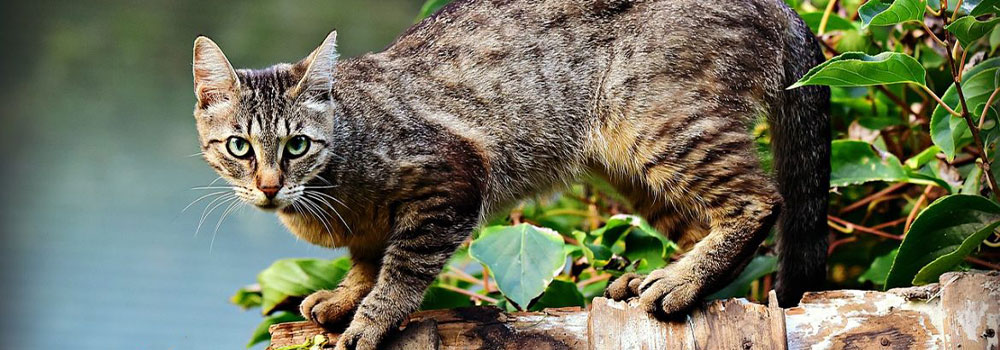Feral Animals

Cats in Australia
Europeans broughts cats to Australia in the 1700s. Some were deliberately released into the bush in the 1800s in an attempt to control rabbits, mice and rats. Cats spread rapidly throughout most of Australia.
Cats are a problem because
They pose a major threat to the survival of many species of native animals. Cats generally eat small mammals, but also catch birds, reptiles, amphibians, fish and insects, taking prey up the size of a brush-tail possum. They have contributed to the extinction of many small to medium sized mammals and ground-nesting birds.
How are they controlled?
Feral cats are shy of traps, and do not take baits readily. They also stay away from humans so are hard to shoot. Control techniques also have to avoid harming domestic cats. Barrier fencing and eradication of cats inside the fences has proved to be effective for protecting endangered species that are being reintroduced eg. Bilby colonies in Queensland. Attempts to improve the effectiveness and humaneness of baits and traps in controlling feral cats are ongoing.
There is a nuisance cat on my property, what can I do?
Traps can be hired from Council. All cats are taken to the Pittwater Animal Hospital for impoundment.
There is a feral cat in the local reserve, can Council help?
Cats found in declared Wildlife Protection Areas and other bushland reserves can by trapped by Council Officers.
If you own a cat:
- Always keep your cat indoors at night
- Consider keeping your cat indoors, or within your property, at all times
- Get your cat desexed
- Don’t dump unwanted cats or kittens in the bush
- Make sure your cat always has enough fresh food and water
- Check your cat into a cattery when you go away
- Make sure your cat has identification!
- Don’t feed stray cats
What the law says about feral cats
Predation by feral cats is listed as a key threatening process under the Threatened Species Conservation Act 1995.
Links and Information
Help protect our local environment